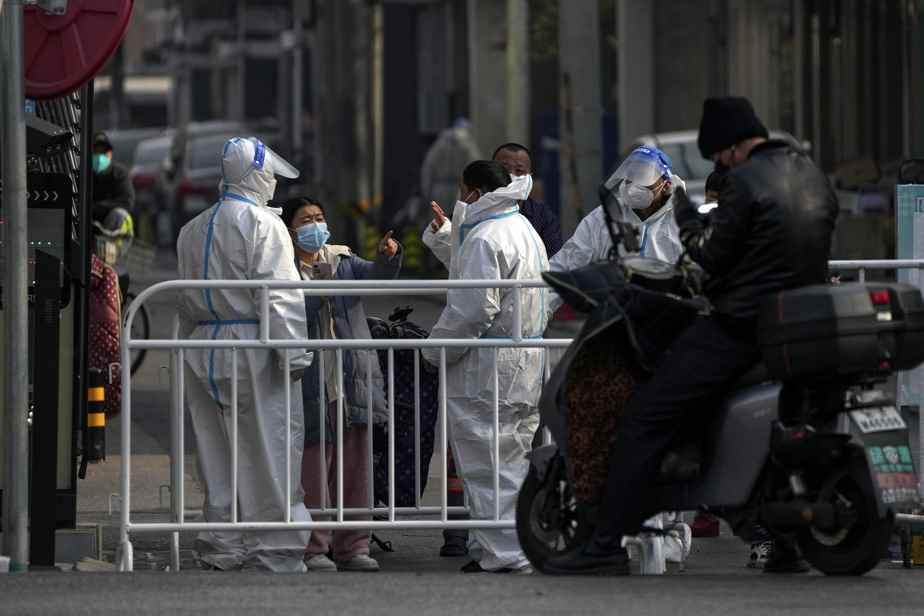(Beijing) The daily number of COVID-19 cases has reached a new record in China, authorities announced on Thursday, who are increasing strict confinements, mass testing and travel restrictions, at the risk of exhausting the population, including the anger growls.
China listed 31,454 cases on Wednesday, of which 27,517 are asymptomatic, the national health bureau said.
The new figures are higher than the 29,390 infections recorded in mid-April, when Shanghai – the world’s third most populous city – was under lockdown and its residents struggled to buy food and access medical care.
These figures appear relatively low in view of the vast Chinese population, which has more than 1.4 billion inhabitants, and the records observed in Western countries at the height of the pandemic.
But under the strict “zero COVID-19” policy that Beijing tirelessly applies, the slightest increase in cases leads to the closure of entire cities and the placing of contacts of infected patients in strict quarantine.
This relentless strategy is causing the weariness and resentment of whole sections of the population as the pandemic, detected at the end of 2019 in China, approaches its third year.
China is the only major economy in the world to still impose such restrictions, prompting sporadic protests.
Hundreds of workers at the world’s largest iPhone factory have shown their anger over their living conditions at their huge industrial site in Zhengzhou, in the center of the country, which has been under strict confinement since October.

SCREENSHOT AGENCE FRANCE-PRESSE
Workers at the Foxconn factory in Zhengzhou showed their anger.
Several major cities, including Beijing, Shanghai, Guangzhou and Chongqing, have also tightened restrictions on positive cases.
The manufacturing hub of Guangzhou in the south, where nearly a third of COVID-19 cases were discovered, has built thousands of temporary hospital rooms to accommodate patients.
“Slow, expensive and bumpy”
In Beijing, which has experienced an epidemic outbreak in recent days, dozens of residential buildings have been confined and companies are generalizing teleworking.
The capital requires a negative 48-hour PCR test result to enter public places such as shopping malls, hotels and government buildings, the city government said.
Schools, restaurants and businesses closed again, fear of being placed in quarantine: a large part of the inhabitants of Beijing are now mentally exhausted by these restrictions, which are often vague and changing, the duration of which is never announced in advance.
The capital announced on Wednesday nearly 1,500 new positive cases (the vast majority asymptomatic) for 22 million inhabitants, a level which remains very low according to international criteria.
The reaction of the Chinese authorities seems disproportionate compared to that of many other countries in the world, which have learned to live with the virus.
But China has yet to approve the public use of more effective mRNA vaccines, and only 85% of adults over the age of 60 had received two doses of the national vaccines by mid-August, according to Chinese health authorities.
And Shijiazhuang, a township neighboring Beijing that was seen as a pilot city to test reopening strategies, reversed most of its easing measures this week.
“The road to reopening could be slow, costly and bumpy,” Ting Lu, chief China economist at Nomura, said in a note. “Shanghai-style full shutdowns could be avoided, but they could be replaced by more frequent partial shutdowns in an increasing number of cities due to soaring COVID-19 caseloads. »
